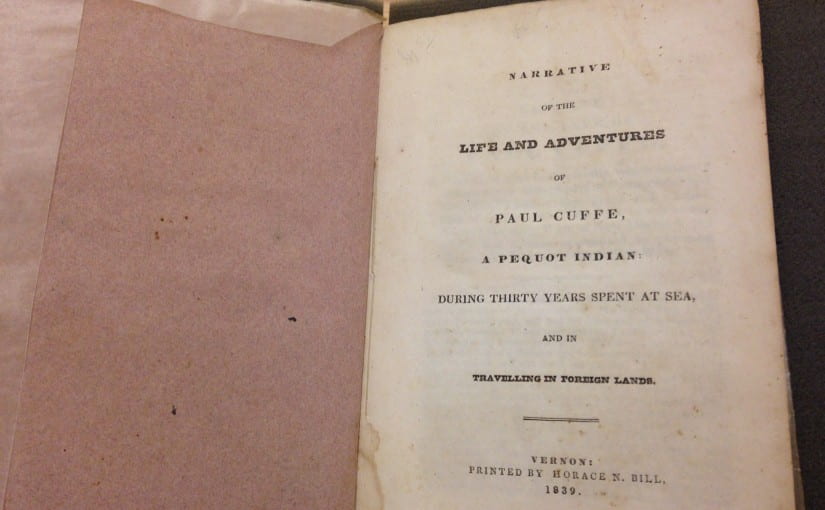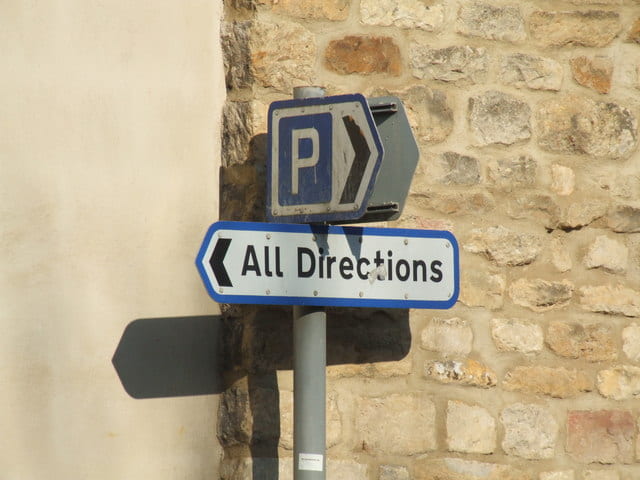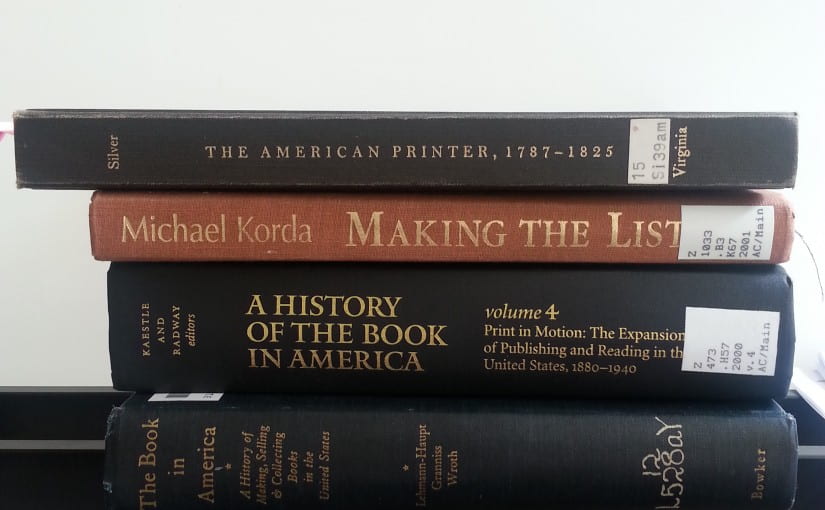At this moment, prospects for the DS Summer Project are still inchoate and hazy. After a week of exploring secondary sources, digital tools, we purposefully splintered ourselves into five proposals to see what projects might be best. Some common themes that emerged from the proposals we discussed were
1. Future in curriculum and student research
2. Geographic data and visualizations (sometimes referred to as maps)
3. Use in scholarly research
4. The value of book covers (the artifact itself, not just texts of books extracted with OCR)
5. Videos (short interviews of scholars, screencasts to explain how to use a website)
Most of our potential projects are broad in scope, and involve Herculean tasks like hunting down publicly accessible/accurate historical maps for each decade from the 1770s onward, or scanning and processing each of the 1300-odd covers of the collection. We are looking at projects such as a searchable gallery of book covers and author portraits or an interactive stack of map layers related to Native American history. Some problems arise with how comprehensive we’d like to be (for example, attempting to scan all of the book covers, or just some of them?) and how useful and interesting our site will be. I tend to get attached to thinking in terms of which tools seem most promising, rather than looking at broader questions of what scholarship should come out of the project’s use.
In the next week we’ll be meeting with Amherst Professors Kiara Vigil and Lisa Brooks of the American Studies Department to discuss what needs and interests the faculty can bring. By then, we should have locked into a fair idea of our project backbone so we can begin the work itself.







